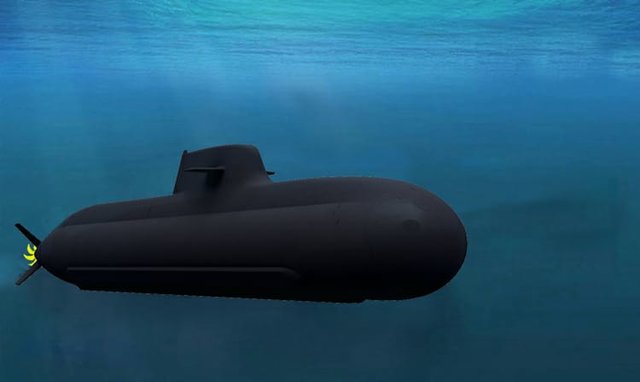Analysis
Securing the rare earth supply chain is crucial for defence
Some of the most modern defence equipment relies on parts made of rare earth elements. The majority of the planet’s reserves is found in China, making the US and other nations heavily dependent on imports. Norbert Neumann looks at the importance of rare earths and ways the US is trying to weaken reliance on Chinese imports.
Some of the most modern defence equipment relies on parts made of rare earth elements. The majority of the planet’s reserves, however, is found in China, making the US and other nations heavily dependent on imports. Norbert Neumann looks at the importance of rare earths and ways the US is trying to weaken reliance on Chinese imports.
What do an F-35, a radio battery and a man-portable air-defence system (MANPAD) have in common? They all need rare earth elements (REE) to build them.
REEs are a group of metals that are critical ingredients for a the evolution of modern technology. Out of the 17 REEs, neodymium and samarium can be used to create resilient magnets that withstand high temperatures, making them perfect for mission-critical electronic and defence applications.
Based on data analysed by the United States Geological Society, 37.9% of our planet’s REE reserves can be found in China alongside the highest mine production activities. While the US has 1.5 million tons in reserves – that accounts for about 1.3% of the world’s REE reserves – and the second-largest mine production, China was responsible for 80% of its rare earth imports in 2019.
But what if China decided to close the tap or reduce the amount of REEs it exports as it did during the 2019 US-China trade wars? While China is unlikely to invade Taiwan based on the Russian aggression in Europe, it may still decide to supply President Vladimir Putin with weapons. That move would trigger economic isolation and another, potentially more serious, trade war between the US and China.

// Concept illustration of the Near Future Submarine. Credit: Fincantieri
The importance of REEs
The US Department of the Interior released a list of 35 minerals it deems essential to the economic and national security in 2018 (updated in 2022), amongst them many REEs. The problem for the US is that the local production of these materials is hugely limited.
The extent of reliance on imports varies from mineral to mineral. Beryllium is mainly used to create lightweight material used in fighter jets, lithium is essential for modern battery production and tin is used in electronics, including soldier semiconductors, a sector that is projected to reach a value of $17.5bn by 2030.
Whereas the US produces some of the minerals mentioned above, it entirely relies on China and other countries for many other supplies. Cerium is used in batteries and in most devices with a screen and magnets forged from neodymium and samarium are impervious to extreme temperatures that are used in fighter jet fin actuators, missile guidance, control systems, aircraft and tank motors, satellite communications and radar and sonar systems.
Securing the supply chain
Founder and advisor to the board at USA Rare Earth Pini Althaus tells Global Defence Technology: “That’s an extremely precarious position for any country to be in. The only way to have a secure supply chain is to start developing projects in this country [the US].”
Domestic efforts to extract rare earths have been underway in the past decades in states like Wyoming, Texas and California with varying degrees of success. Molycorp, for instance, reopened the longstanding Mountain Pass mine in California in the early 2000s only to go bankrupt in 2015.
Now the US has a six months’ REE supply for defence applications and it is held in a protected cell for 30 months.
Other solutions lawmakers and officials have been pushing for to weaken China’s control over the rare earth sector are stockpiling critical minerals or developing substitutes. The latest attempt was in 2019.
Earth and natural resources intelligence company Terra Intel CEO Mike Hanley says: “Now the US has a six months’ REE supply for defence applications and it is held in a protected cell for 30 months. It’s very important for guidance systems, submarines, guided missile cruisers, but also for the MANPADS and other shoulder-fired rockets currently used in Ukraine, too.”
The US began funding the construction of rare earths processing facilities a few years ago, but after the minerals processed, they must be turned into magnets to be used in military hardware. None of that happens in the US today, while China and Japan are the largest specialised magnet producers.

// Japan Self-Defense Force JS Hayabusa PG-824 guided-missile patrol boat. Rare earths are crucial for guidance systems, submarines, guided missile cruisers. Credit: Shutterstock. viper-zero
REE extraction and the environment
Other efforts were made by US President Joe Biden with his $2tr infrastructure legislation that seeks, amongst other things, to rebuild the country’s semiconductor industry. That is on top of an executive order signed in February last year that is set to review gaps in the domestic supply chain for rare earths, and in March the same year, the Department of Energy announced a $30m initiative that will aid the research and securing of US REE supply chain.
Between the 1960s and 1980s, before high domestic environmental pressures and cheaper foreign labour arrived, the US was the global leader in REE mining. So, rebuilding the entire supply chain is possible in practical terms, but business, environmental and political factors may make endeavours more complicated, especially over the short term.
Althaus thinks REE infrastructure could be built in a safe way and the problem that does not allow the break-away from Chinese dependence lies in the red tape. “It’s so much bureaucracy around permissions, you’ve got NGOs and others that step in the way and make it very difficult for projects in certain parts of the country to actually be developed,” he says.
“And we're not talking about going into a national forest and start to mine there. We're talking about places where you'd have a mine in Nevada or elsewhere, where there really no environmental concerns. But concerns are being either invented, fabricated or manufactured.”
However, many REEs are found within radioactive materials that can leach into water supplies. Extracting, processing and disposal of material can also cause environmental disruptions, and regulations in China are often much more lenient than in the US.
Unless the US can find ways to navigate regulatory and infrastructure challenges to its domestic REE extraction efforts, breaking its reliance on China for these critical materials – in defence as well as other sectors – will prove difficult.
// Main image: Pathfinders Regiment fires an NLAW main battle tank & anti-tank weapon. Credit: Crown copyright / MOD 2022